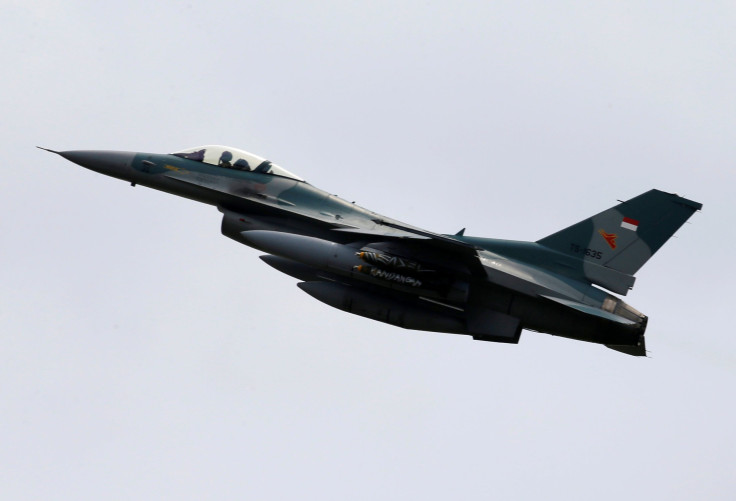F-16 As A Drone? US Air Force Testing Autonomous Aerial Strikes Using Fighter Jets

The Air Force Research Laboratory (AFRL) recently tested autonomously flying F-16 fighter jets in collaboration with Lockheed Martin. The tests could mark a big leap for military drone technology as these jets could be used in the future for large scale air-to-ground strikes.
"This demonstration is an important milestone in AFRL's maturation of technologies needed to integrate manned and unmanned aircraft in a strike package. We've not only shown how an Unmanned Combat Air Vehicle can perform its mission when things go as planned, but also how it will react and adapt to unforeseen obstacles along the way,” Capt. Andrew Petry, AFRL autonomous flight operations engineer, said in a press release issued Monday by Lockheed Martin.
Read: Trump Orders Missile Airstrike On Syria In Response To Chemical Attack
The tests have been done earlier in the form of computer mockups in which artificial intelligence was pitted against Air Force Colonels, but this was the first field test. In the test, an unmanned system was used to control an F-16 as a surrogate Unmanned Combat Air Vehicle (UCAV). The goal of the tests was to find out how the UCAV would react to dynamic threats during an air-to-ground strike mission. The system passed the tests and demonstrated that the UCAV could plan and execute maneuvers on its own.
#SkunkWorks partnered with @usairforce to demonstrate manned/unmanned teaming capabilities: https://t.co/lewPOLz1fI Photo via U.S. Air Force pic.twitter.com/FThukW424N
— Lockheed Martin (@LockheedMartin) April 10, 2017
The demonstration was carried out over a period of two weeks in the form of two rounds of tests. In the first one, the autonomous F-16 was tested as a part of a formation as Wingman, but in the second round, the self-flying plane was tested to see how it would react to changing threats.
The tests are a part of the Loyal Wingman program and the aim is to help create autonomous wingmen, which will assist human pilots as a part of formation.
Read: China Developing Military Drones To Elude Anti-Aircraft Weapons
While military drones have been used in air strikes over the past decade, a self-flying F-16 raises the magnitude of possible air strikes. The fact that it would dynamically adapt to threats also points toward the possibility of wartime usage of self-flying planes.
© Copyright IBTimes 2025. All rights reserved.




















